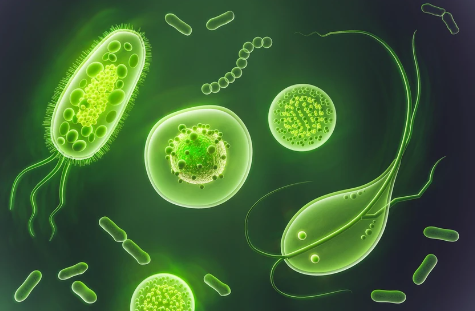E. Coli Outbreak: Causes, Symptoms, and Prevention (GS Paper 2, Health)

Context
- The United States is currently experiencing an E. coli outbreak linked to contaminated food, bringing attention to the health risks associated with this common bacterium.
- While most E. coli strains are harmless and play a role in digestion, certain pathogenic strains can cause serious illness.
About E. Coli
- Escherichia coli (E. coli) is a bacterium that normally resides in the intestines of humans and animals.
- It is a diverse species with over 700 serotypes, most of which are harmless.
- However, some strains, particularly those that produce Shiga toxin, can lead to severe gastrointestinal disease.
- These pathogenic strains can cause illness with very low doses, making them a significant public health concern.
Types of Pathogenic E. Coli
E. coli infections can be categorized into several types, each associated with different symptoms and health risks:
- Enterohemorrhagic E. coli (EHEC):
- This strain is particularly harmful and is known for causing severe gastrointestinal symptoms, including bloody diarrhea. The most infamous serotype, O157
- , is often linked to outbreaks from undercooked ground beef or contaminated vegetables.
- Enterotoxigenic E. coli (ETEC):
- Commonly associated with traveler's diarrhea, this strain produces toxins that lead to watery diarrhea and abdominal cramping.
- Enteropathogenic E. coli (EPEC):
- Often affecting infants, EPEC can cause severe diarrhea and dehydration.
- Uropathogenic E. coli (UPEC):
- A leading cause of urinary tract infections, UPEC can ascend from the intestines to the urinary tract, causing various symptoms.
- Neonatal Meningitis E. coli (NMEC):
- This strain can cause meningitis in newborns, resulting in severe health complications.
Signs and Symptoms
Symptoms of E. coli infections vary depending on the strain and the individual’s overall health:
- Gastrointestinal Infection:
- Common symptoms include:
- Watery or bloody diarrhea
- Abdominal cramps and pain
- Nausea and vomiting
- Low-grade fever (in some cases)
- Urinary Tract Infection (UTI):
- Symptoms may include:
- Frequent urge to urinate
- Burning sensation during urination
- Cloudy or foul-smelling urine
- Pelvic pain
- Sepsis:
- If E. coli enters the bloodstream, symptoms may include:
- Fever
- Chills
- Rapid heartbeat
- Confusion or disorientation
Symptoms typically manifest within hours to ten days after exposure, depending on the type of infection.
Transmission Routes
E. coli can be contracted through various routes, making it a versatile pathogen:
- Contaminated Food:
- Consuming undercooked or raw foods, particularly:
- Ground beef
- Unwashed fruits and vegetables
- Unpasteurized dairy products
- Raw sprouts
- Contaminated Water:
- Drinking or swimming in contaminated water sources, which can harbor E. coli due to fecal contamination from humans or animals.
- Surface Contact:
- The bacteria can be spread by touching contaminated surfaces or objects and then touching the mouth or face.
- Poor Hygiene Practices:
- Inadequate handwashing after using the bathroom or before handling food can facilitate the spread of E. coli.
Risk Factors
Certain groups are at higher risk for E. coli infections, including:
- Children and the Elderly:
- Young children (especially those under 5) and adults over 60 are more susceptible due to weaker immune systems.
- Immunocompromised Individuals:
- People with weakened immune systems, such as those undergoing chemotherapy or living with HIV/AIDS, are at increased risk.
- Pregnant Women:
- Hormonal changes can make pregnant women more susceptible to infections.
- Individuals with Low Stomach Acid:
- People taking medications that reduce stomach acid (e.g., proton pump inhibitors) may be more vulnerable.
Treatment Options
E. coli infections are typically treated based on the severity and type of infection:
- Gastrointestinal Infections:
- Most cases resolve on their own without antibiotics. Hydration is crucial to prevent dehydration from diarrhea. Severe cases may require hospitalization and supportive care.
- Urinary Tract Infections:
- Antibiotics are usually prescribed. However, resistance is increasing, so sensitivity testing may be necessary to identify the most effective treatment.
- Sepsis:
- Requires immediate medical attention, often involving hospitalization, intravenous fluids, and broad-spectrum antibiotics until the specific strain is identified.
Prevention Tips
To minimize the risk of E. coli infection, individuals can follow these prevention strategies:
- Food Safety:
- Cook meat thoroughly to the recommended internal temperatures (ground beef should reach at least 160°F).
- Wash fruits and vegetables thoroughly under running water before consumption.
- Avoid unpasteurized dairy products and juices.
- Water Safety:
- Drink only treated and filtered water, especially when traveling.
- Avoid swimming in potentially contaminated water sources.
- Hygiene Practices:
- Wash hands regularly with soap and water, particularly after using the bathroom, before preparing food, and before eating.
- Use hand sanitizer if soap and water are not available.
- Kitchen Hygiene:
- Clean surfaces and utensils with hot, soapy water after preparing food, especially raw meat.
- Avoid cross-contamination by using separate cutting boards for raw meat and vegetables.
By staying informed, practicing good hygiene, and following food safety guidelines, individuals can significantly reduce their risk of E. coli infections and help protect public health.


